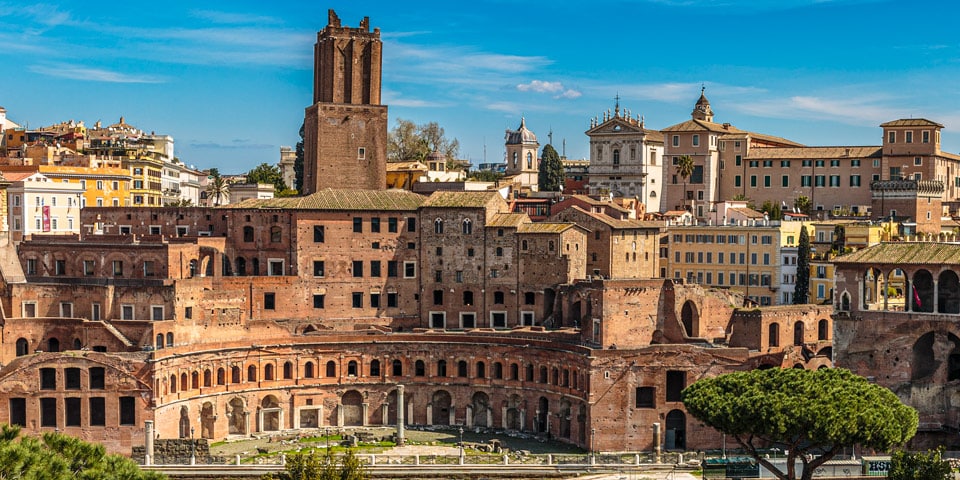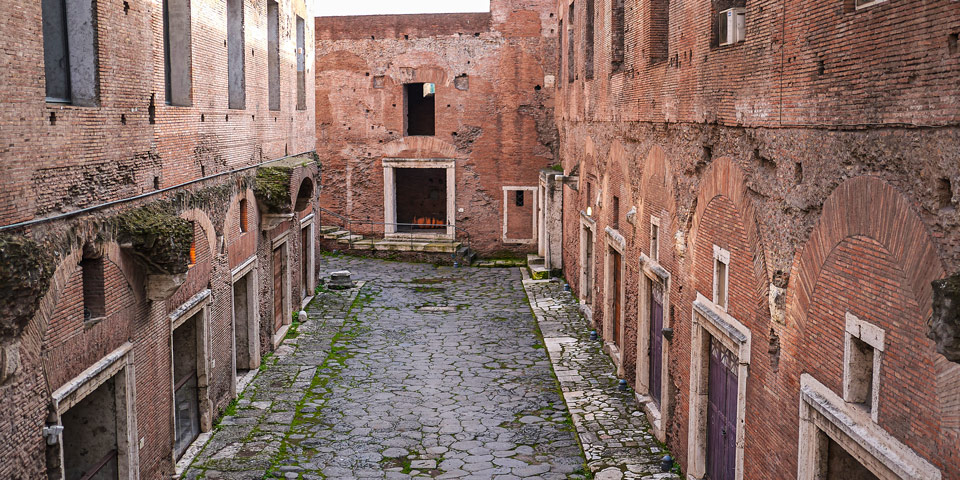

24828 views

| Opening Hours |
Sunday:
-
Monday:
-
Tuesday:
-
Wednesday:
-
Thursday:
-
Friday:
-
Saturday:
-
|
|---|---|
| Address | Via Quattro Novembre, 94, Roma |
| Website | www.mercatiditraiano.it |
Trajan’s Market is a well-preserved ancient Roman commercial complex built in the early 2nd century AD. Often considered the world’s oldest shopping mall, it comprises a series of multi-level, semi-circular exedrae and tabernae arranged around a large courtyard. The complex was a hub for various commercial activities and likely housed administrative offices.
Today the museum complex of Trajan’s Antique Market is part of the Monti district.
Contents
ToggleTrajan’s Market, constructed in the early 2nd century AD, is a testament to ancient Rome’s grandeur and architectural prowess. Built during the reign of Emperor Trajan, who ruled from 98 to 117 AD, this complex was part of a larger project that included the construction of Trajan’s Forum and the celebrated Trajan’s Column. The Market was designed by Apollodorus of Damascus, a renowned Greek architect, and it reflects the innovative urban planning of the time.
Read also about the Roman Forum.
The market complex was a multifunctional hub, combining commercial and administrative functions. Its intricate layout comprised multi-level buildings, semi-circular exedrae, and numerous tabernae (shops) lined the corridors. The buildings housed a variety of goods and services, making it one of the earliest examples of a shopping mall. Administrative offices and public spaces also suggest that the complex played a role in official and social activities.
Constructed on the slopes of the Quirinal Hill, Trajan’s Market adapted to the natural topography, showcasing Roman engineering ingenuity. The complex’s innovative use of space included a series of terraces supported by vaults and arches, contributing to its architectural significance. The Market’s proximity to Trajan’s Forum, linked by a grand staircase, further emphasized its connection to ancient Rome’s political and civic center.
Over the centuries, Trajan’s Market experienced various transformations. After the fall of the Roman Empire, the complex was repurposed for different uses, including housing and artisan workshops. Despite these changes, many of the original structures have endured, making it one of the best-preserved archaeological sites from ancient Rome. Recognizing its historical and architectural importance, Trajan’s Market has been designated as a UNESCO World Heritage Site, allowing modern visitors to step back in time and marvel at the ingenuity of Roman urban planning.
When visiting Trajan’s Market, there are several key features and areas to explore to fully appreciate the historical and architectural significance of this ancient complex:

Remember to check for any guided tours or informational materials available at the site, as they can enhance your experience by providing historical context and insights into the significance of Trajan’s Market.
Read also about the Top 10 Farmers Markets of Rome
Author: Kate Zusmann
This website uses cookies. For more info read the cookies policy
Rome.us © 2025. Created with love by Roman experts and guides.